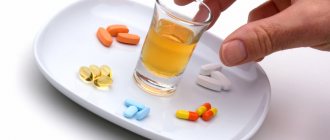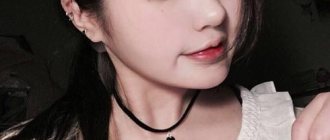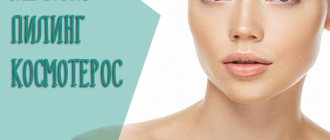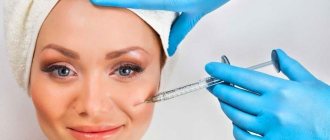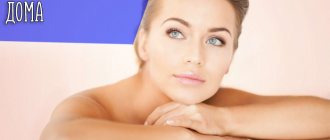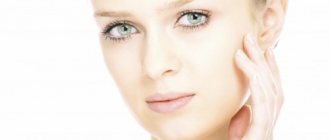What is a chemical peel and how does it work?
Peeling (from English “to peel” - exfoliate, cleanse) - removal of dead skin cells to improve the quality and appearance.
Chemical peeling is a method of controlled dissolution of the superficial, middle or deep layers of the epidermis and dermis, which takes into account the objectives for the purpose of physiological renewal using special diluted compounds - organic acids or alkaline components. Chemical agents in different concentrations activate fibroblasts to form new collagen and elastic fibers and increase the reparative intercellular capacity.
The procedure renews metabolic, antioxidant and protective processes, corrects age-related changes and normalizes the acid-base and biochemical balances of the skin. After the sessions, regeneration and remodeling of the skin are stimulated and cell activity is restored.
Story
Chemical peeling is one of the oldest cosmetic procedures with successive stages of practical development and deepening of knowledge in different historical periods. The technique has made a transition to the use of effective, safe, less traumatic and “year-round” drugs.
There is a certain sequence in the study of peelings.
- Ancient Egypt - the use of milk and fractional mineral, fruit, sand fragments in special compositions.
- Middle Ages - the use of substances from grapes and citrus fruits for rejuvenation and whitening of the entire body.
- 1883 - German physician Paul Gerzon Unna discovered the effectiveness of TCA, salicylic acid, resorcinol and phenol in the treatment of age spots and post-acne manifestations.
- 1974 - Eugene Scott unveiled the use of alpha hydroxy acids, Professor Albert Kligman discovered the healing properties of vitamin A for the skin.
- The end of the 90s marked the beginning of widespread chemical peeling in Russia.
Indications
- Biological aging - expression lines and deep age wrinkles, dull complexion, thinning, peeling and decreased elasticity of the skin.
- Photoaging is a disorder of the relief of the skin with hyperpigmentation, folds and vascular manifestations.
- Prevention of premature aging.
- Oily, seborrheic skin, acne, post-acne, congestive spots, enlarged pores.
- Dry skin, facial ptosis and signs of sagging.
- Pigment spots - freckles, chloasma, melasma, lentigo, post-inflammatory formations.
- Stretch marks, scars on the body - décolleté, abdomen, thighs.
- Keratomas, papillomas, molluscum contagiosum as part of combination therapy.
- Hyperkeratosis is a thickening of the top layer of skin.
- Preparation for invasive methods of exposure - injection procedures, resurfacing and plastic surgery.
- General disorders of skin quality and appearance in the facial area - periorbital area, cheeks, zygomatic area, forehead and body, neck, décolleté, arms and hands, shoulders, legs, back, abdomen, buttocks.
Contraindications for chemical peels
- Pregnancy, lactation.
- Increased body temperature.
- Malignant and multiple benign neoplasms.
- Violations of the integrity of the skin - wounds, cuts, burns.
- Dermatoses in the acute stage - psoriasis, eczema, allergic dermatitis.
- Herpetic infection.
- Viral, fungal and inflammatory processes - pustular lesions.
- Taking isotretionine, photosensitizing drugs.
- Pronounced rosacea.
- Tendency to keloid scars.
- Fresh tan and very dark skin.
- Autoimmune processes - scleroderma, systemic lupus erythematosus.
- Epilepsy.
- Decompensated diabetes mellitus
- Serious disturbances in the functioning of the cardiovascular system, gastrointestinal tract, kidneys.
- Carrying out traumatic procedures - deep grinding, cleaning, injection techniques less than 1.5-2 months before the start of the peeling course.
- Individual intolerance.
Indications and contraindications for yellow peeling
Indications for retinoic peeling:
- skin aging;
- acne;
- loss of skin elasticity;
- pigmentation;
- dry and dehydrated skin;
- excessive secretion of sebaceous secretions;
- photoaging.
As can be seen from the indications, yellow peeling is suitable for skin with age-related changes. Therefore, it is recommended to use retinoic peeling for the face from the age of 35.
Contraindications:
- pregnancy and lactation;
- individual intolerance and allergic reaction to retiniodes;
- inflammatory processes on the skin;
- herpes;
- fungal skin infections;
- the presence of open wounds, ulcers, pustules;
- liver diseases;
- taking certain medications;
Also, yellow peeling should be used with caution and according to individual indicators when taking antibiotics and retinoids, severe forms of disease, or after a recent tan. Retinoic peeling is not performed for minors.
In addition, it is not recommended to use yellow peeling immediately after a number of cosmetic procedures - UV irradiation, chemical or mechanical cleaning, some hardware procedures, etc. In this case, you must take a break.
Differences in chemical peels by depth of penetration
- Super-superficial (affect only the stratum corneum of the skin) is a comfortable method for improving the quality of all types of skin. For example, 10% TCA-trichloroacetic acid, salicylic acid, alpha (30% glycolic acid) and beta hydroxy acid (5% salicylic acid), 5-10% retinol, enzymes of plant and animal origin (papain, trypsin).
- Superficial (act on the upper layers of the epidermis without disturbing the basal layer) - safe, painless, quickly renew, moisturize the skin without injury and enhance the formation of collagen and elastin with the help of weak acids. For example, 15-20% TCA, 30-50% glycolic and 20% salicylic, fruit acids (lactic, tartaric, mandelic), resorcinol.
- Median (penetrate the entire thickness of the epidermis and dermis to the papillary layer within living structures). They have a moderate painful, pronounced rejuvenating effect, improve the structure of the skin, activate the synthesis of new cells, and provide long-lasting results due to high concentrations of active components. For example, 25-30% TCA, 70% glycolic acid, 30-40% salicylic acid, Jessner's solution, 50% fruit acids.
- Deep (captures the epidermis and the entire thickness of the dermis, leaving small “islands” of tissue for regeneration). Correct significant defects and restore cellular resources. They are rarely performed in a hospital setting using anesthesia due to severe pain and possible complications. For example, phenol preparations.
Characteristics of active ingredients
Active components exist in several formulations.
Superficial peels
Retinol (yellow peeling) - reduces hyperkeratosis, tightens pores, activates the formation of new collagen fibers.
Alpha hydroxy acids (fruit, AHA) - water-soluble preparations for renewing and moisturizing the skin:
- Pyruvic acid - normalizes the condition of sensitive skin and increases its density.
- Lemon - brightens the skin.
- Milk - regulates water balance, softens the skin and exhibits anti-aging, anti-inflammatory effects. For example, Eye&Lip Contour Peeling, Algomask, 28.5% containing lactic, glycolic acids and argireline for the correction of hyperkeratosis, including around the eyes and lips.
- Almond - has an antibacterial effect, increases muscle tone and exfoliates dead cells. All-season.
- Glycolic - isolated from sugar cane, penetrates into the deep layers of the skin due to its small molecular weight and restores the texture of the epidermis, corrects age-related and inflammatory phenomena, reduces age spots. Used in higher concentrations for medium peels. For example, Anti Age Peel, Algomask, 50%.
Beta-hydroxy acids are fat-soluble substances that act in the deeper layers of the epidermis:
- Salicylic - the variability of intensity allows it to be used in different types of peelings. Reduces the appearance of acne and signs of photoaging, normalizes lipid balance. For example, Basik Peeling, Algomask, 18.5% containing 13.5% lactic acid and 5% salicylic acid.
Medium peels
- Trichloroacetic acid (TCA) - regulates metabolic processes and restores vascular mechanisms. For example, Anti Acne Peeling, Algomask, 19.5% containing 5% TCA, 5% salicylic, citric and lactic acids.
- Jessner's solution is a combination of acids and resorcinol, which evens out the complexion and stimulates regeneration. The variability of concentration allows for a surface effect.
- PRX-T33 - contains 33% TCA, 3% hydrogen peroxide and 5% kojic acid. Brightens and stimulates the skin, performed at any time of the year.
Deep peelings
- Phenol is a water-soluble element with an alkaline reaction. It has a pronounced rejuvenating effect, has toxic properties and obvious discomfort when applied, which is why it is practically not used in modern cosmetology.
Chemical peeling of the face: the achieved effect and indications for use
Chemical peeling
activates the body's protective functions, resulting in increased production of substances such as hyaluronic acid, collagen and elastin. This leads to improved skin tone, getting rid of unevenness, and smoothing out wrinkles. The procedure of chemical peeling of the face will also save you from skin pigmentation, including age-related skin, scars and marks left by acne.
Most often, chemical peeling of the facial skin is performed, but this method is often used to care for such parts of the body as the neck, hands, and décolleté.
Indications for chemical peeling
- Chemical peeling of the face is needed to combat age-related changes in the skin.
- Chemical peeling of the face is effective regardless of age and skin characteristics. The only difference will be the composition of the acids used and their concentration.
But you should not resort to chemical peeling in the fight against a number of age-related skin changes, which include loss of elasticity and sagging. In this case, chemical peeling will not work; it is better to resort to the services of plastic surgeons and get a facelift.
results
The uses of chemical peeling are:
- Removing dead particles (skin smoothing, removing age spots),
- Increasing the immunity of epidermal cells (improving the protective barrier),
- Moisturizing (filling with hyaluronic acid),
- Rejuvenating effect and destruction of scars and stretch marks (collagen production),
- Facial skin lifting (elastin production),
- Elimination of inflammation (activation of skin cells).
What is the effect of the peeling procedure?
A chemical facial peel can renew and rejuvenate your skin. When pigmentation needs to be removed, some skin blemishes such as scars and acne marks resort to this procedure. After undergoing several sessions of chemical peeling, you can get rid of wrinkles, the effects of acne, and achieve narrowing of pores and a fresh complexion.
The peeling procedure can be applied to various parts of the body, not just the face. For example, chemical peeling is used on the back to get rid of pigmentation, pimples, and the effects of acne.
Recommended articles on the topic:
- Facial mesotherapy procedure: pros and cons
- Beauty injections: types of drugs, reviews
- Placental therapy is the secret of eternal youth
At what age can you have a chemical peel?
If the skin is normal, cosmetologists allow chemical facial peeling for people over 18 years of age. But if there are personal indications, for example, signs of acne, pigmentation, difficulties in skin regeneration, chemical peeling can be used at an earlier age.
Is it possible to do peeling if there is inflammation?
If the skin is severely inflamed, peeling should not be done. It is necessary to seek help from a cosmetologist, and after checking the condition of the skin, he will recommend the necessary treatment. In case of minor acne, a peeling session will bring positive results. After chemical peeling, your face will look significantly better: your pores will become narrower and your skin will look healthier.
Pre-peeling preparation
Before performing a mid-peel, specialized care is required 1-2 months before the procedure.
- Creams with fruit acids are applied at night 14 days before peeling and sunscreen.
- A treatment containing 5-12% glycolic and kojic acids is used in an amount of 3-4 procedures with an interval of 10-14 days to exfoliate and smooth the stratum corneum.
- Drugs are used to reduce the risk of age spots (vitamin C, topical retinoids, azelaic acid).
- Conditions for limiting exposure to the sun and solarium are observed.
- A course of antiviral therapy is prescribed if there is a tendency to herpetic infection.
- Vessels are prepared by taking antioxidant and angioprotective components after 55 years (for example, Troxevasin, Troxerutin).
No specific preparation is required before performing surface peeling. Sometimes serums and creams with a low acid content (6-12%) and high pH-3-4 are prescribed for 7-10 days.
Types of peelings used at Veronikal Herba
- Depigmenting peeling Renophase (superficial)
Peeling is aimed at getting rid of age spots of any origin. As a result, the skin becomes lighter and its tone is evened out. As a pleasant bonus, you can notice rejuvenating effects, as well as filling cells with moisture and nutrients.
Recommended quantity in the program: 2 procedures once every 2 weeks.
- Almond peeling “Renophase” (superficial)
Almond peeling contains mandelic acid in combination with anti-age components, antioxidants and whitening ingredients (arbutin and kojic acid), which has a powerful rejuvenating and brightening effect on hyperpigmentation of any etiology, including long-term post-inflammatory hyperpigmentation.
The content of the active phytoestrogen complex Renophase has a vascular strengthening and anti-inflammatory effect, increases the elasticity and turgor of the skin. Mandelic acid is well tolerated by all skin types, including sensitive ones. Its effectiveness is high in the treatment of grade 1-3 acne, including age-related acne. The drug normalizes the secretion of sebum and delicately restores the proper functioning of the sebaceous glands.
Recommended quantity in the program: 2 procedures once every 2 weeks.
- Retinol peeling TimeCode -Yellow peeling (medium)
The creators of this peeling and home care products have been working for more than 10 years on its unique recipe, which could simultaneously solve several problems and not disrupt our rhythm of life.
Important qualities of Timecode peeling for maximum effect in the treatment of acne and pigmentation:
- Treatment (therapeutic effect of drugs);
- Optimal (most favorable) comfortable post-procedure period;
- Determinant (certain) predicted result;
- Effective: pronounced effect after each procedure.
Indications: moderate to severe photoaging, hyperpigmentation, post-inflammatory hyperpigmentation, acne, actinic keratosis, oily skin and enlarged pores.
Recommended quantity in the program: 2 procedures once every 2 weeks.
- Keratoregulating peeling Renophase (dermatological cleansing)
Designed for oily skin with enlarged pores and a dense stratum corneum. As a result of the procedure, sebum secretion is normalized, pores are cleared of comedones and tightened. The surface of the skin is cleansed of keratinized particles, acne spots are smoothed out, and the likelihood of pustular rashes is reduced.
Recommended quantity in the program: 2 procedures once every 2 weeks.
Read material on the topic: Facial mesotherapy procedure: pros and cons
Tactics of procedures
The protocol for the sessions depends on the type of substance, indication and initial condition of the skin. There is a sequence of peelings
- Preparatory stage (pre-peeling care, examination of the affected area, taking an anamnesis to identify possible contraindications and complications).
- Gentle cleansing and degreasing of the skin, protecting eyes and lips with a nourishing cream.
- Selection and application of 1-2 ml of the composition in the form of a gel, mask or solution, depending on the form of release and the effect on the desired areas (for example, a mask-tablet for serums). Brushes, cotton pads or swabs are used for processing.
- Consistent and uniform distribution of peeling in the form of 1-3 layers across zones: forehead, nose, temporal region, bony edge of the orbit, cheeks, chin, neck, central and fixed facial parts.
- Using a fan or fan for cooling when pain and discomfort occurs.
- Time delay - depends on the depth of peeling and the area of the treated area (up to 2 minutes in the eye area, from 15 minutes to 2 hours in the face and body area).
- Controlling the reactive state of the skin (redness, swelling, burning, soreness).
- Neutralization with a special solution containing alkali for 1-3 minutes to moisturize and tone the skin (for example, neutralizer lotion).
- Removing peeling. For superficial peeling, the solution is washed off immediately after the skin reaction appears or after a few hours (for example, yellow peeling).
- Prescription of post-peel care for protection, nutrition and hydration (for example, sunscreen and age spots 45).
Where to go for chemical facial peeling services
After you have read the material on this procedure and decided to use it in one of the beauty salons, make sure that this establishment has all the necessary documents and certificates. For example, our City Beauty and Health Center “Veronika Herba” has them, so we can guarantee the visitor a high level of quality of the services provided.
In addition, our arsenal includes cosmetics from leading professionals in this industry:
- Renophase
. This cosmetics, developed by a French pharmacologist, is popular among cosmetologists in more than 50 countries around the world. Renophase cosmetics have proven their speed and effectiveness in solving problems associated with pigmentation, acne, photoaging and many others.
- Mandelac.
This moisturizing gel with mandelic acid has a therapeutic effect on oily acme-prone skin, exhibiting an antiseptic effect. Well prepares the skin for chemical peels and laser resurfacing.
- TimeCode.
On the one hand, these are products that are unique in composition and are most necessary in modern aesthetic practice. On the other hand, this is a very concise brand, where all unnecessary or redundant products are removed.
Important!
Peeling procedures at the City Beauty and Health Center “Veronika Herba” are carried out by professional cosmetologists.
Consultation for the service is free
!
Find out more by calling 8 (495) 995-15-13
.
You don't have to spend a lot of time performing complex and unpleasant procedures at home. It is much easier to seek help from real professionals - the Veronika Herba beauty and health center, equipped with effective and modern equipment. There are two such centers in Moscow – near Timiryazevskaya metro station and Otradnoye metro station.
Why clients choose Veronika Herba Beauty and Health Center:
- This is a beauty center where you can take care of yourself at a reasonable cost, while your face and/or body will be treated not by an ordinary cosmetologist, but by one of the best dermatologists in Moscow. This is a completely different, higher level of service!
- You can receive qualified help at any time convenient for you. The beauty center is open from 9:00 to 21:00, seven days a week. The main thing is to agree with your doctor in advance on the date and time of your appointment.
Sign up for a consultation with a specialist by phone 8 (495) 995-15-13
, and you will see for yourself!
Expected effects
Depending on the type, quantity, and depth of peelings, certain mechanisms occur.
- Exfoliation, cleansing and whitening of the skin (removal of dead cells, age spots).
- Activation of biological functions and cellular resources (antioxidant effect).
- Moisturizing (synthesis of hyaluronic acid).
- Normalization of the sebaceous glands and narrowing of pores.
- General skin rejuvenation (increasing elasticity, smoothing the relief, reducing wrinkles, smoothing out creases).
- Renewal of cellular structures (correction of scars and stretch marks).
- Increases blood circulation and strengthens blood vessels.
- Restoration of skin immunity and barrier functions.
- Achieving skin tightening (lifting effect).
- Normalization of the density and elasticity of the epidermis.
- Formation of new contours and improvement of the structure of the face and body.
Features of chemical peels
- With superficial peeling, a slight and quickly passing burning and tingling sensation occurs, the effect is cumulative and short-lived. With medium peeling, the pain is pronounced, but the effect is long-lasting.
- The depth of penetration depends on the acid-base balance (the lower the pH, the greater the activity of the drugs), concentration (the higher, the deeper the peeling effect) and consistency (the thicker the composition, the softer the peeling).
- With medium and deep exposures, a frost effect is observed (a whitened area of the skin to control the action of acids), which lasts from 15 minutes to 3 hours after the procedure.
Carrying out the procedure ↑
Retinol peeling is carried out in two stages, involving identical actions over two days. Each session takes about three hours. The procedure is painless and therefore does not require anesthesia.
The product is applied along massage lines
The cosmetologist applies salicylic acid to the face, and after it - a mixture that contains retinoic acid. The ratio of the components of the composition depends on the sensitivity of the skin and the required effect of the procedure. There can be from one to three layers. As soon as the specialist notices redness of the skin, the session ends.
After chemical exposure, the cosmetologist will moisturize the skin with special products. The next day the procedure is repeated.
Immediately after exposure, redness of the skin is observed; on the third day, slight peeling begins, which will go away naturally. Your face will have a yellowish tint for a couple of days.
Rehabilitation period
Skin restoration with superficial peeling takes up to 5 days, with medium peeling - up to 10 days, with deep peeling - up to 4-6 months. To prevent unwanted consequences after chemical peeling, it is important to follow the rules.
- Avoid the use of decorative cosmetics in the first 2-5 days after the procedure.
- Do not wash your face during the active post-procedure phase (24-72 hours).
- Use soft cleansers based on hydrophilic oils or plant extracts.
- Do not remove crusts or flakes of skin yourself, but lubricate them generously with cream.
- During the cycle of procedures, avoid traumatic agents and procedures (scrubs, grinding, plastic surgery).
- Limit excessive facial movements for 7 days.
- For 7-10 days, do not visit the bathhouse, swimming pool, sauna, or engage in heavy physical exercise.
- For 14 days, do not sunbathe, do not visit the solarium, but use sunscreen.
- Follow post-peeling care (moisturizers with hyaluronic acid, phospholipids and waxes to restore the epidermis, Panthenol for skin regeneration, vitamin C to strengthen the vascular wall).
- When deep peeling, use antibacterial and anti-inflammatory drugs to stimulate skin healing.
- During the course, maintain an optimal drinking regime and adhere to a balanced diet with limited spicy, fatty foods.
Preparatory stage ↑
It is necessary to prepare the skin for retinoic peeling. This will make it softer, the components of the composition will more easily penetrate the inner layers. In addition, the preparatory stage will allow you to avoid unpleasant consequences.
Important! Two weeks before the procedure, you should avoid visiting the solarium and the beach, do not take laser treatments, or use scrubs or other exfoliating products.
During this period, you should use creams or gels based on glycolic acid. For people with thin skin there is no such need.
Side effects and complications
Predictable.
- Erythema is redness of the skin, which depends on the concentration of substances and lasts up to 2-3 hours with superficial peeling, up to 5 days with medium peeling, and up to 2 months with deep peeling.
- Exfoliation is the removal of a thin layer of dead cells. It can be small-plate for superficial peeling and large-plate for medium peeling. Duration varies from 3 to 7 days.
- Swelling after chemical peeling is a natural reaction to a violation of the integrity of the skin and an increase in capillary permeability during medium and deep peelings. Stores for 2 to 4 days.
- Changes in skin color (darkening) are response mechanisms due to peeling, which lasts up to 14 days.
- Sensitivity is a manifestation of skin reflexes to the penetration of products, which persists for 14 days.
Undesirable (as a result of improper post-procedure care, individual characteristics or after poor-quality implementation of the technique). They are divided into immediate (up to 2 weeks after the procedure) and delayed (from 3 to 10 weeks).
- Exacerbation of acne is an inflammatory reaction characteristic of oily skin. Antibiotics are prescribed to suppress the processes.
- Activation of herpetic infection - occurs in the absence of a preventive course before peelings. If a rash occurs, antiviral medications are recommended.
- The addition of a secondary infection is manifested by pustular rashes due to non-compliance with antiseptic rules and a proper recovery period. Local or systemic antibacterial agents are used.
- Allergic reaction - to prevent the appearance of rashes, a test test is first carried out on a limited area of the skin to identify possible manifestations. When they occur, antihistamines (for example, Erius) are used.
- Persistent redness of the skin - occurs when blood vessels are dilated after deep peeling. In this case, it is important to follow the necessary recommendations after the sessions.
- Hyperpigmentation is the activation of cells that produce pigment (melanin). In this case, pre-peel preparation and the use of retinoic and phenol peels are important, as well as mesotherapy to reduce age spots.
- The demarcation line is a clear boundary between the treated and undamaged areas of the skin. Leveled by Jessner peeling.
- Scars (hypertrophic, keloid) - appear with medium and deep chemical peels. Corrected by laser exposure, ozone therapy, electrophoresis with lidase.
How to perform a chemical facial peeling procedure in a beauty salon
Preparation
Quite often, before a chemical peeling procedure for the face in a salon, cosmetologists suggest using creams and serums containing retinol, and sometimes stronger preparations with vitamin A, for example, Tretinoin. The use of these products is necessary to speed up the process of skin regeneration and reduce the risk of complications.
If the patient suffers from frequent herpes rashes on the face, then seven days before the chemical peel procedure and two weeks after it, antiviral medications such as Acyclovir or Zovirax should be taken. This should not be neglected, since herpes in this case can cause scars on the skin.
All patients should be informed about the need to use sun creams with a high degree of protection. They should be used both before and after a chemical peel procedure. This will allow you to subsequently achieve a uniform skin tone. In addition, patients with dark skin need to pre-treat the skin with hydroquinone to avoid problems with skin hypopigmentation.
Is anesthesia necessary?
Superficial chemical peeling of the face is carried out without anesthesia, but the application procedure may cause a slight burning sensation.
An average chemical peel can be very uncomfortable. Typically, median peeling is carried out against the background of preliminary preparation with a tranquilizer, for example, diazepam, and an analgesic. Sometimes a combination of tranquilizers and local anesthesia is used.
Deep chemical peeling of the face requires general anesthesia with the presence of a plastic surgeon and an anesthesiologist. However, recently softer chemicals have been used, which has made it possible to abandon general anesthesia and use premedication with tranquilizers along with local anesthetic injections.
How does the chemical peel procedure work?
- A chemical facial peel involves initially treating the skin with substances containing alcohol or acetone to rid the skin of excess oil.
- Afterwards, a chemical composition is applied to the skin of the face, protecting the eyes in advance from possible contact with the product used. Peeling is maintained for the required amount of time, which is determined by the type of skin, type of chemical composition of the drug, etc.
- Then the chemical composition is removed from the face, and protective agents are applied to the skin.
- If this was a session of superficial chemical peeling of the face, the patient can return to his business.
- Regeneration of the skin after a medium peeling procedure takes from several days to a week, and after a deep peeling procedure – up to several weeks. The speed of skin restoration is influenced by the patient’s age, general condition of the body and the functioning of the immune system.
Face after chemical peeling photo
The following photos show before and after chemical peeling of the face:
Peeling course
The number of procedures differs depending on the type of substance.
- Superficial peelings are carried out once every 7-14 days in the amount of 5-10 procedures. Maintenance sessions are carried out 1-2 times a year.
- Medium peelings are used once every 15-30 days in the amount of 1-5 procedures. Maintenance course - once every 3-5 years. The optimal period is from November to March to avoid negative solar effects.
- Deep peelings - exposure is carried out rarely, 1-2 times during life when clear indications are identified.
Yellow retinoic peeling – eliminates cosmetic defects
Retinoic peel (also called yellow peel) is a method of chemical exfoliation of the skin. In cosmetology, this procedure is used to remove age spots, treat acne, and also to stimulate natural rejuvenation processes in the dermal tissues.
Yellow peeling – what is it?
Retinoic peeling is a chemical exfoliation procedure for the skin. The main component of the exfoliant is retinoic acid, an organic substance that activates the regeneration of dermal cells and the synthesis of fibroblasts. The skin after retinoic peeling looks refreshed and well-groomed. The result is an improvement in its condition, strengthening of its protective functions, and prevention of the occurrence of neoplasms.
The exfoliant treatment area is the face (including eyelids), neck and décolleté, and hands.
Why is this type of peeling called yellow?
It got its name because of the characteristic color given to it by the main component, as well as one of the auxiliary ingredients - ascorbic acid.
Retinol or retinoic peeling?
A common misconception is to believe that these are the same procedure. However, in fact, these types of peeling differ from each other in composition. The main component of yellow peeling with retinol is vitamin A, and retinoic peeling is organic acid, which has a more intense healing effect on the skin.
Types of peeling
- One-day. This procedure takes place in two stages: first, the peeling composition is applied to the skin in the salon, and then the client carries out a similar manipulation at home before going to bed.
- Two days. Due to the specific application technique, this type of peeling takes much longer – up to 4 hours. The exfoliant is applied and washed off alternately. At the final stage, the mask is left on the skin, and the client washes it off at home after 2 hours. The next day the procedure is repeated in the same sequence.
According to the depth of impact, yellow peeling can be superficial or medium. Superficial is suitable for thin skin (provided that you do it no more than once a month) and is allowed for application to the area around the eyes.
The best remedy for freckles, age spots, and first wrinkles is a medium peeling. Its implementation is accompanied by pronounced peeling of the skin, which lasts relatively short time.
Indications for use
Recommendations for yellow peeling include the following:
- hyperpigmentation;
- dull complexion and loss of skin turgor;
- acne and post-acne (scars, scars);
- photoaging or first wrinkles.
At what age is retinoic peeling allowed?
This procedure is useful for clients aged 25-50 years. Young people are encouraged to look for an alternative.
Photos before and after the procedures will demonstrate what the effect might be after a course of yellow peeling.
Contraindications and restrictions
A distinctive feature of yellow peeling is its embryotoxicity. Retinoic acid is dangerous for the development of the fetus and lingers in the dermal tissues for many months. Therefore, the procedure is prohibited during pregnancy and lactation.
How long can you not get pregnant after retinoic peeling?
Pregnancy should be planned 6-12 months after completion of the course of procedures.
Contraindications include:
- acute phase of chronic diseases;
- liver failure (peeling cannot be performed in case of hepatitis);
- viral or dermatological diseases (demodex, rosacea, eczema, atopic dermatitis);
- allergy to peeling components;
- herpes;
- taking retinoid medications;
- the presence of warts on the skin, as well as unhealed scratches and abrasions.
This procedure is prohibited in case of rosacea, as well as in the presence of a fresh tan.
Is yellow peel toxic?
This procedure can be dangerous if contraindications are not followed, as well as in the absence of a preparatory period.
When can I do it? Seasonal restrictions
During the post-peeling period, contact with sunlight is dangerous for unhealed skin. Therefore, in spring and summer it is better to refrain from carrying out a course of procedures.
Preparation for retinoic peeling and procedure protocol
Before you begin exfoliating sessions, you should prepare your skin for chemical exposure. Therefore, the cosmetologist prescribes light superficial peelings and home use of creams with glycolic acid no later than 2 weeks before the start of the course.
A week before the procedure, it is prohibited to scrub the skin, sunbathe or visit the solarium.
How to do yellow peeling in the salon: description of the procedure
The peeling session begins with makeup remover to cleanse the skin of impurities and decorative cosmetics. Next comes the stage of preparation for the effects of the retinoic exfoliant. The cosmetologist applies a low concentration product based on glycolic or salicylic acid to the skin. The purpose of this manipulation is to enhance the effect of retinoic peeling and activate the synthesis of collagen and elastin. The product is not washed off.
Particularly sensitive areas of the skin are protected with a special ointment. The product with retinoic acid is applied to the skin with light massage movements. Sometimes, to enhance the exfoliation effect, the face is covered with a thin film.
The concentration of retinoic acid is 10-20%, and the higher it is, the longer the product stays on the face. Most often, the mask is not washed off in the salon: the cosmetologist applies a protective cream on top of it.
Get ready for the fact that it is better for you to go home in a taxi so that your yellow face with traces of a peeling mask does not attract the attention of others.
Read more about the retinoic peeling procedure in the next video.
How long should I leave it on my face and how to wash off the retinoic peeling product?
If your goal is superficial exfoliation of the skin, then the exfoliant product can be washed off after 15-25 minutes. For medium peeling, you will have to not wash your face for 6-12 hours after the procedure. Next, the client washes off the product himself using neutral soap. Immediately after this manipulation, panthenol ointment is applied to the skin.
Yellow peeling – is it painful or not?
The procedure is tolerated quite comfortably by clients. During application of the peeling agent, a burning sensation is felt - this is quite normal.
Recovery after yellow peeling and stages of skin peeling
After washing off the peeling agent, the skin turns red and becomes very tight. Edema may also appear: such consequences are predictable. Then, over the next 2 days, the next phase of skin renewal begins - peeling.
What to do if there is no peeling after yellow peeling?
The reason for this may be the accumulation of a large number of keratinized cells on the surface of the epidermis. They act as a kind of “shield”, preventing the peeling agent from passing into the deeper layers of the skin.
Also, this phenomenon may be due to the resistance of the skin - its increased density, which does not allow it to exfoliate under chemical influence.
Solutions:
- increasing the degree of exfoliation and the possible prescription of additional procedures;
- use of retinoic peeling with dimexide, a drug with anti-inflammatory and antibacterial action. This exfoliant penetrates deeper into the layers of the epidermis, improving metabolic processes and destroying pathogens.
How long does it take for skin to recover after peeling?
The optimal period is 2 weeks. After 14 days, you can attend other cosmetic procedures - for example, facial cleansing.
What to do after the procedure: post-peeling care
Therapeutic cosmetics: what to apply after the procedure
Skin care must be carried out using panthenol-based ointment. It must be applied the very next day after washing.
Additionally, you can use masks containing enzymes and sprays based on thermal water. Be sure to consult a cosmetologist when choosing care products.
Mandatory condition: before going outside, apply sunscreen to your face. You will have to protect your skin with this cosmetic product for a month.
What not to do
- During the process of skin restoration, baths, saunas, swimming pools, as well as sunbathing and solariums are prohibited. It is also not recommended to play sports at this stage. Why? Steaming and increased sweating are dangerous for the skin and can cause complications.
- During the course, you cannot dye your hair or perm your hair, or use cosmetics containing vitamin A.
Is it possible to drink alcohol during the rehabilitation period?
Drinking alcoholic beverages, spicy foods and using spices is not recommended.
Are there any restrictions on medications?
It is not recommended to use hormonal drugs: they disrupt the skin's immunity, increasing the risk of developing dermatological or fungal infections. In addition, under their influence, dermal cells regenerate much more slowly.
All of the above restrictions are valid for a week while the peeling of the skin continues.
Side effects and how to eliminate them
If redness and peeling of the skin is a normal reaction to retinoic peeling, then itching, rash or increased pigmentation indicate violations of the rules of rehabilitation care.
How to distinguish temporary side effects from real complications?
Expected side effects (burning sensation, redness) usually disappear within a few hours or the first day after the procedure. If such symptoms worsen and do not go away, contact your esthetician immediately.
Common complications after yellow peeling:
- Pigmentation. The cause of its appearance may be irregular use of sunscreens, hormonal changes in the body, smoking or endocrine disorders. Solutions: medium peels, whitening masks, mesotherapy.
- Burn after peeling. The reason is excess acidity concentration or lack of pre-peeling preparation. The problem must be solved only with a competent cosmetologist!
- Weakened body immunity. Consult your doctor in advance about taking vitamin complexes.
- Pimples, increased acne. The reason is ignoring contraindications for liver dysfunction. Actions to eliminate it - consultation with a cosmetologist regarding taking medications and the advisability of continuing the course.
Duration of the course and frequency of sessions
What is good about yellow peeling: its course is kept to a minimum. It is believed that 3-5 procedures are sufficient to solve a cosmetic problem.
How often should you peel?
It is not advisable to conduct such sessions more than once a month. The interval between sessions may be shorter depending on individual factors. A course of procedures is carried out a maximum of 2 times a year.
Related and alternative procedures
A course of yellow peeling goes well with procedures such as facial mesotherapy and biorevitalization. This combination will help avoid drying out the skin and enhance the rejuvenating effect of cosmetic products.
The sequence of procedures is determined by the cosmetologist who conducts the treatment course. Often sessions of “beauty injections” are prescribed before peeling, but there are exceptions.
Alternative options:
- Coral peeling is perfect for those with sensitive skin. There are fewer contraindications to its use, and it is permitted for liver diseases.
- An economical option is to treat acne with retinoic ointment. It contains retinoic acid in concentrations of 0.05% and 0.1%. This remedy is considered effective against acne and comedones, and in some cases as a prevention of the appearance of the first wrinkles.
- Glycolic peeling will provide gentler exfoliation of the skin, but will require a longer course of procedures.
- TCA peeling is an option for those who need more intense skin exfoliation and smoothing of the epidermis. However, such procedures will require a long recovery period.
Will home treatments replace professional peeling in a salon?
This is not to say that yellow peeling sessions at home will allow you to save on facial care. To exfoliate your skin yourself, you will need to purchase a set of peeling products, caring creams, and a glycolic acid solution.
Kits for home treatments are sold both in beauty salons and in specialized online stores. They can be supplemented with other cosmetics, but it is wiser to select them after consultation with a cosmetologist. Today, products for retinoic peeling are produced by many well-known brands of professional cosmetics, for example, Home Peel (Retinol peeling 5%).
If you are determined to carry out the procedure yourself, you cannot do without periodic visits to a cosmetologist. He will draw up an algorithm for preparing for the course and recommend how to care for your skin during the post-peeling period.
Arguments for and against yellow peeling
Retinoic peeling is a specific procedure that is best performed in a salon under the supervision of an experienced cosmetologist. Only under the constant supervision of a specialist will it benefit your skin.
Pros:
- the short period is reduced to a minimum, for which this procedure is called “weekend peeling”;
- exfoliant removes scars and age spots;
- wrinkles after peeling procedures are smoothed out, and the skin becomes more elastic;
- sensations during application of the exfoliant are limited to only a slight burning sensation.
Minuses:
- high prices for the procedure;
- a large number of contraindications;
- prohibition on planning childbirth for 6-12 months after the course.
If you take care of your skin before and after the course in the correct way, the result will please you with the “minus 10 years” effect and the elimination of cosmetic imperfections.
Prices and artists
See current prices for retinoic peeling: in Kiev, Odessa, Kharkov, Dnieper, Vinnitsa and other cities of Ukraine.
Combination with cosmetic procedures
Chemical peels are harmoniously integrated into various cosmetology techniques to enhance the effect.
- The introduction of botulinum toxin and fillers for additional correction of age-related changes occurs 2-3 weeks after superficial-medial peelings.
- Mesotherapy - the introduction of specialized cocktails into the middle layer of the skin to stimulate cellular processes of self-regulation and renewal is carried out before or after procedures in 3-10 days.
- Biorevitalization - the use of preparations containing hyaluronic acid to maintain the required level of hydration and increase regeneration is carried out 5-10 days after superficial and medium peels.
Using chemical peels at home
Medium and deep peels are not carried out independently due to the lack of an accurate calculation of the concentration, type of acids and the increased risk of complications.
For home use, superficial peels in low concentrations (1-10% glycolic, 2-4% salicylic, 0.5-4% lactic, azelaic acid, topical retinoids) are recommended, which normalize metabolic processes and renew the skin.
Determine the basic principles of using surface compounds at home.
- Preliminary selection of components, coordination of techniques and recommendations after consultation with a specialist in order to avoid undesirable consequences after the procedure.
- Skin cleansing.
- Consecutive single-layer application of the composition to dry skin using a brush, avoiding the area around the eyes.
- Removal of peeling after waiting time, assessing the condition of the skin and applying a neutralizer.
- Use of moisturizers and protective products after the session.
- The duration of the course is selected individually and is 5-10 procedures with an interval of 1 time every 7-10 days.
What type of chemical facial peel is right for you?
All chemical facial peels damage the skin in one way or another. They differ only in the degree of injury. Therefore, it is very important to correctly select the peeling depth that is right for your skin, so that you don’t have to regret the procedure later. There are different types of chemical peels for the face:
Surface
chemical peeling of the face affects only the epidermis - the top layer of skin.
The results of this type of peeling will appear on the third to fifth day. The skin will begin to recover, but the exfoliation process may take longer.
Superficial chemical peeling for the face significantly rejuvenates the upper layers of the skin, making its tone even. This type of peeling gives good results in the treatment of acne and age spots. But don't expect it to help you fight wrinkles.
This is the mildest type of peeling. For a lasting effect, you should undergo the procedure once every 7 days for one and a half to two months.
Average
facial peeling penetrates to the middle of the dermis - the skin layer located under the epidermis.
Chemical mid-face peeling is used when it is necessary to get rid of sun spots, keratosis, small scars left by acne, and pigmentation. In addition, such peeling will eliminate minor wrinkles and make the skin more elastic, as the volume of collagen in it will increase.
It will take about a week for the skin to recover after this procedure. This type of peeling requires great caution when used on dark skin, as it threatens pigmentation changes.
Deep
chemical peeling of the face is able to penetrate into the deep layers of the dermis.
It is used to treat more serious skin problems such as scars, cicatrices, wrinkles, and aging from sun exposure. After using this type of peeling, the synthesis of collagen and elastin in the skin improves, which makes it more elastic.
We can talk about epithelization seven to ten days after the procedure of deep chemical peeling of the face, but the final restoration of the skin occurs in a month or two. It is not recommended to do this peeling for people with heart disease and kidney failure, since phenol is used here.
Read material on the topic: Laser facial skin rejuvenation: useful tips and recommendations

